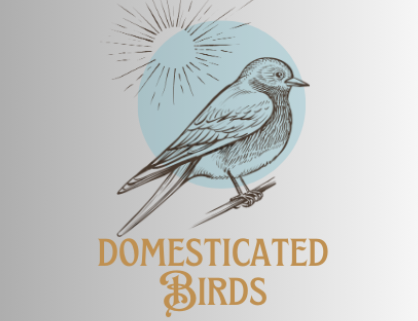Pet birds, like any other creatures, have their ways of communicating with their environment. One common behavior that many bird owners find challenging to deal with is screaming. Whether it’s a loud, persistent screech or a constant chirping, excessive screaming can be both annoying for owners and distressing for the bird itself. In this comprehensive guide, we will delve into the science behind pet bird screaming, understand the reasons behind this behavior, explore the different types of screaming, and provide effective solutions to stop your pet bird from screaming and ensure a harmonious environment for both you and your feathered friend.
The Science Behind Pet Birds Screaming
Pet birds, particularly those kept in captivity, exhibit behaviors that are influenced by various factors, including their natural instincts, environment, and social interactions. Screaming, in particular, is a form of vocalization that serves several purposes for birds, including communication, establishing territory, seeking attention, expressing discomfort, or signaling danger.

Reasons Why Pet Birds Show Screaming
Social Interaction and Attention-Seeking
Birds, being highly social creatures, often vocalize to communicate with their flock or their human companions. In a domestic setting, birds may resort to screaming to seek attention, especially if they feel lonely, bored, or neglected. Lack of mental stimulation or interaction can lead to excessive vocalization as a means for birds to express their needs or emotions.
Territorial Behavior
Some species of birds are naturally territorial and may scream to assert their dominance or defend their perceived territory. This behavior is more common in male birds during breeding season or when they feel threatened by perceived intruders, including other pets or unfamiliar humans.

Environmental Stressors
Changes in the environment, such as loud noises, sudden movements, or unfamiliar objects, can trigger a bird’s stress response, leading to excessive screaming. Birds are sensitive to their surroundings, and any disruptions or disturbances can cause them to feel anxious or threatened, prompting them to vocalize as a form of self-defense or alarm.
Understanding Different Kinds of Screaming
Contact Calling
Contact calling is a natural behavior observed in wild birds to maintain communication with their flock members. Pet birds may engage in contact calling when they are separated from their owners or when they feel isolated, using vocalizations to establish their presence and locate their companions.
Alarm Calls
Alarm calls are sharp, high-pitched vocalizations emitted by birds in response to perceived threats or danger. These calls serve as a warning to other birds in the vicinity and can be triggered by sudden movements, loud noises, or the presence of predators.
Attention-Seeking Screams
Attention-seeking screams are repetitive, persistent vocalizations used by birds to garner attention from their owners. These screams are often loud and demanding, indicating that the bird is seeking interaction, food, or entertainment.

Effective Solutions: To stop your pet bird from screaming.
In the following lines we will discuss about techniques to stop your pet bird from screaming:
Conventional Techniques
1. Positive Reinforcement: Reward desired behaviors, such as quietness or calmness, with treats, praise, or attention to encourage your bird to associate silence with positive outcomes.
2. Establish Routine: Create a consistent daily routine for your bird, including feeding, playtime, and social interaction, to provide structure and reduce anxiety.
3. Provide Enrichment: Offer a variety of toys, perches, and activities to stimulate your bird mentally and physically, preventing boredom and excessive vocalization.
4. Socialization: Introduce your bird to various social situations gradually. Exposing them to different people, animals, and environments can help reduce anxiety and prevent excessive screaming.
5. Distraction Techniques: When you notice your bird starting to scream, distract them with a favorite toy or activity. Redirecting their attention can help break the cycle of vocalization.
6. Communication: Establish clear communication cues with your bird to signal when it’s appropriate to vocalize and when quiet behavior is expected. Consistency in reinforcement and gentle correction can help reinforce desired behaviors.
Modern Approaches

1. Environmental Enrichment: Create a bird-friendly environment with natural elements, such as plants, branches, and hiding spots, to mimic their natural habitat and reduce stress.
2. Training and Desensitization: Use training techniques, such as clicker training or target training, to teach your bird alternative behaviors and desensitize them to stressors or triggers.
3. Physical Comfort: Ensure your bird’s physical needs are met, including proper nutrition, hydration, and a comfortable living space. Discomfort or pain can manifest as increased vocalization, so addressing any underlying health issues is essential.
Feasible Solutions to stop your pet bird from screaming.
1. Positive Interaction: Spend quality time interacting with your bird through training sessions, grooming, or simply talking to them in a soothing tone. Building a strong bond based on trust and companionship can reduce anxiety and minimize screaming behavior.
2. Regular Veterinary Check-ups: Schedule regular check-ups with an avian vet to monitor your bird’s health and address any underlying medical issues that may contribute to excessive screaming.
3. Behavioral Consultation: Seek guidance from a certified avian behaviorist or experienced bird trainer to develop a customized behavior modification plan tailored to your bird’s specific needs and personality.
4. Environmental Changes: Assess your bird’s living environment for potential stressors or triggers. Make adjustments such as relocating their cage to a quieter area or providing more hiding spots to create a sense of security.

Signs You Have to Consult an Avian Vet
While occasional vocalization is normal for pet birds, persistent or excessive screaming may indicate underlying health or behavioral issues that require professional intervention. If you notice any of the following signs, it’s crucial to consult an avian vet:
Changes in Vocalization Patterns: Sudden changes in the frequency, duration, or intensity of your bird’s vocalizations.
Physical Symptoms: Symptoms such as lethargy, loss of appetite, feather plucking, or respiratory distress.
Aggressive Behavior: Aggressive displays, such as biting, lunging, or territorial aggression, accompanied by vocalizations.
Extra Tips
Create a Calm Environment: Minimize stressors in your bird’s environment by providing a quiet, secure space away from loud noises or disturbances.
Monitor Diet and Nutrition: Ensure your bird receives a balanced diet rich in nutrients to support overall health and well-being.
Patience and Persistence: Addressing excessive screaming may take time and patience, so remain consistent and positive in your training efforts.
Conclusion: Stop your pet bird from screaming
In conclusion, understanding the reasons behind your pet bird’s screaming behavior is the first step toward finding effective solutions to address it. By implementing a combination of conventional, modern, and feasible techniques, along with seeking professional guidance when needed, you can help your bird overcome excessive screaming and create a harmonious relationship based on mutual trust and understanding.
FAQs
What if my bird screams excessively despite trying various solutions?
If your bird continues to scream excessively, consult with an avian veterinarian to rule out any underlying medical issues and explore specialized behavior modification techniques.
Can I use punishment to stop my bird from screaming?
Punishment can exacerbate stress and anxiety in birds, leading to more undesirable behaviors. Use Positive reinforcement and redirection to stop your pet bird from screaming.
How long does it take to see results from behavior modification techniques?
The timeframe for seeing results varies depending on the bird’s personality, previous experiences, and consistency in implementing training methods. Patience and consistency are key to success.
Is screaming normal behavior for all bird species?
While vocalization is natural for birds, the frequency and intensity of screams vary among species and individuals. Understanding your bird’s species-specific behavior is essential for effective management.
Can diet affect my bird’s screaming behavior?
Yes, nutritional deficiencies or imbalances can contribute to behavioral issues in birds. Ensure your bird receives a balanced diet appropriate for their species and consult with a veterinarian for dietary recommendations.
How can I prevent my bird from screaming when I’m away?
Providing environmental enrichment, such as toys, puzzles, and foraging activities, can help alleviate boredom and reduce separation anxiety. Additionally, leaving on soothing background noise can create a calming atmosphere


horizontal balancing machines
Understanding Horizontal Balancing Machines
Horizontal balancing machines are essential tools in the field of mechanical engineering, specifically designed to correct the unbalance of various rotors and shafts. They play a vital role in ensuring the precision, efficiency, and durability of rotating machinery. These machines work by spinning the rotor and measuring its vibrations, allowing users to identify the imbalance and determine the corrective weights needed to achieve balanced operation. In this guide, we will explore the types, design features, and essential components of horizontal balancing machines, providing insights for those interested in creating or utilizing these devices.
Introduction to Horizontal Balancing Machines
The need for horizontal balancing machines arises from the critical requirement to maintain the smooth operation of rotating components. Imbalanced rotors can lead to excessive vibrations, resulting in component wear, increased energy consumption, and possible machinery failure. Understanding the significance of these machines helps address the challenges of maintaining industrial equipment across various applications, including turbines, fans, and mixers.
Types of Horizontal Balancing Machines
There are primarily two categories of horizontal balancing machines: Soft Bearing and Hard Bearing machines. Both serve the same fundamental purpose but differ significantly in their design and functionality.
Soft Bearing Machines
Soft Bearing machines utilize flexible supports that help in measuring vibrations while allowing the rotor to oscillate. These machines feature supports made from materials like springs that possess a lower natural frequency than the operation frequency of the rotor. This design is vital for accurately detecting and measuring the rotor’s imbalance.
Soft Bearing machines are widely used due to their simplicity and cost-effectiveness. They allow for balancing a range of rotors and are particularly favored for in-house applications where budget constraints are significant. Examples include balancing heavy-duty components like drive shafts and turbochargers. Vibration sensors in these machines detect oscillations and provide data for calculating the necessary corrective weights.
Hard Bearing Machines
In contrast, Hard Bearing machines utilize rigid supports designed to provide stability at higher operational speeds. These machines achieve high precision in balancing due to their robust design, which can accommodate a wider range of rotor sizes and weights. The supports in Hard Bearing machines are often constructed using intricate designs that facilitate precise identification of the imbalance forces acting on the rotor.
Hard Bearing machines are ideal for applications that require high-speed balancing, offering improved performance over their Soft Bearing counterparts, especially in industrial settings. They leverage advanced measurement systems, including force sensors and vibration sensors, to monitor the rotor’s behavior closely and ensure accurate balancing throughout the operation.
Key Components of Horizontal Balancing Machines
Understanding the essential components of horizontal balancing machines is crucial for anyone looking to create or use these devices. Below are the critical elements that make up these machines:
1. Bedframe
The bedframe serves as the foundation on which all other components are mounted. It is designed to provide stability and support during the balancing process, ensuring that external vibrations do not interfere with measurements.
2. Support Bearings
Support bearings are pivotal in mounting the rotor being balanced. They must be designed to minimize friction and allow smooth rotation. The choice between hard and soft bearings can significantly impact the machine’s performance and measurement accuracy.
3. Drive Mechanism
The drive mechanism is responsible for rotating the rotor at the desired speeds. This component must be robust, allowing for variable speeds while maintaining precise control during operation.
4. Measuring System
The measuring system incorporates sensors to detect vibrations and calculate the rotor’s balance condition. They collect data and communicate it to the control unit, which processes the information to determine the corrective actions needed for balancing.
5. Control Unit
The control unit processes the input from sensor measurements. It calculates the necessary corrective weights’ location and magnitude, enabling the operator to adjust the rotor for optimal balancing.
Building a Horizontal Balancing Machine
For those interested in constructing a horizontal balancing machine, there are several considerations to keep in mind:
1. Define Your Needs
Assess the types of rotors you intend to balance and determine the required accuracy and operational speed. This will guide the machine design and the choice between Soft or Hard Bearing systems.
2. Select Quality Components
Choosing high-quality materials for the bedframe, bearings, and measuring systems is critical. Quality components will ensure precision and reliability over the machine’s operational lifespan.
3. Follow Design Guidelines
Consider consulting design literature specific to horizontal balancing machines. Following established guidelines in constructing the supports, drive system, and measuring apparatus will enhance your machine’s performance and reliability.
4. Integrate Measurement Technology
Incorporate vibration and force sensors as part of your measuring system. The accuracy of your machine largely depends on how well these sensors can detect imbalance and communicate the data for processing.
5. Test for Accuracy
Once the machine is assembled, conduct tests to verify the accuracy of its measurements and the effectiveness of its balancing capabilities. Regular maintenance and calibration are essential for sustaining performance over time.
Conclusion
Horizontal balancing machines are invaluable in maintaining the efficiency and reliability of rotating machinery. Whether opting for Soft or Hard Bearing systems, understanding their features, components, and operational principles is crucial for anyone involved in balancing rotors. For hobbyists and manufacturers alike, following proper guidelines in designing and building these machines can lead to successful outcomes and improved machinery performance. Embrace the technology and explore the benefits these machines offer in reducing wear and ensuring smooth operation in various industrial applications.